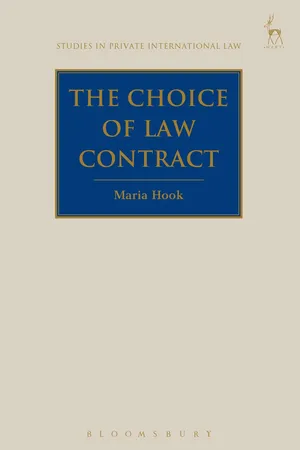The Choice of Law Contract
About this book
This book offers a contractual framework for the regulation of party autonomy in choice of law. The party autonomy rule is the cornerstone of any modern system of choice of law; embodying as it does the freedom enjoyed by parties to a cross-border legal relationship to agree on the law applicable to it. However, as this study shows, the rule has a major shortcoming because it fails to give due regard to the contractual function of the choice of law agreement. The study examines the existing law on choice of law agreements, by reference to the law of both common and civil law jurisdictions and international instruments. Moreover, it suggests a new coherent approach to party autonomy that integrates both the law of contract and choice of law. This important new study should be read with interest by private international law scholars.
Frequently asked questions
- Essential is ideal for learners and professionals who enjoy exploring a wide range of subjects. Access the Essential Library with 800,000+ trusted titles and best-sellers across business, personal growth, and the humanities. Includes unlimited reading time and Standard Read Aloud voice.
- Complete: Perfect for advanced learners and researchers needing full, unrestricted access. Unlock 1.4M+ books across hundreds of subjects, including academic and specialized titles. The Complete Plan also includes advanced features like Premium Read Aloud and Research Assistant.
Please note we cannot support devices running on iOS 13 and Android 7 or earlier. Learn more about using the app.
Information
Table of contents
- Series Editors’ Preface
- Acknowledgements
- Contents
- Table of Cases
- Table of Legislation
- 1. Introduction
- 2. Selection of the Applicable Law by Contract
- 3. The Scope of Party Autonomy
- 4. Independence of the Choice of Law Contract
- 5. Regulating the Choice of Law Contract
- 6. Agreement to Choose the Applicable Law
- 7. Formation of the Choice of Law Contract
- 8. Validity of the Choice of Law Contract
- 9. Conclusion
- Select Bibliography
- Index
